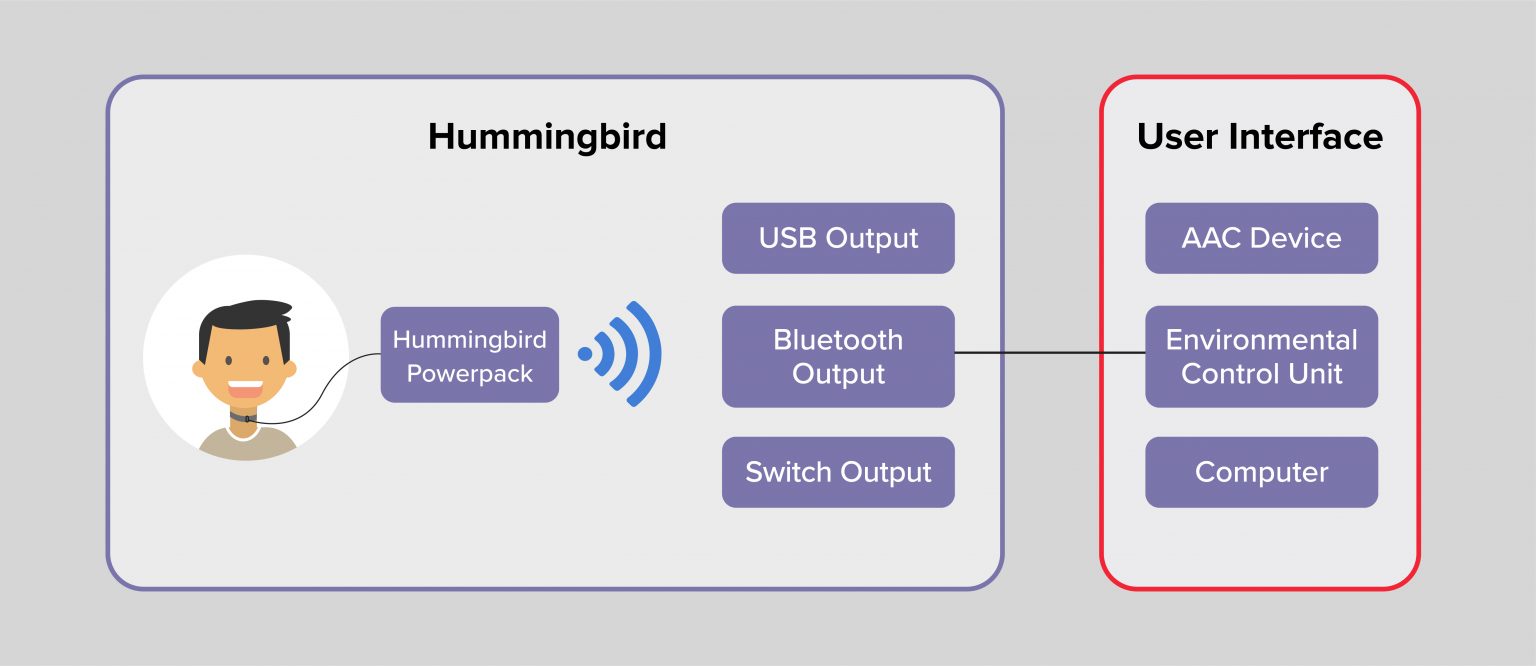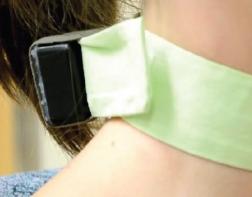Introducing the Hummingbird
The vocal cord vibration switch, also known as the “Hummingbird”, is an access technology that converts vocal cord vibrations into binary control signals for augmentative and alternative communication (AAC), environmental control, and computer access. This novel device — currently used by dozens of children with severe disabilities and complex access needs — is well suited for individuals who are unable to form words but can still produce vocalizations. The versatile Hummingbird easily adapts to many environments. Unlike regular voice-based switches, it works well in loud environments such as classrooms as it is not sensitive to surrounding noise and only responds to the user’s vocalizations. Additionally, since the Hummingbird detects a full range of periodic vocal cord vibrations from soft to loud, it requires less effort than a microphone-based switch.
How it works
A sensor containing a dual-axis accelerometer is held on the user’s throat by a wearable neckband. The sensor is connected to the Hummingbird power pack which detects periodic vibrations associated with vocalizations. The Hummingbird also filters out sounds caused by bodily functions, like coughing and swallowing, as well as extraneous head movement. When a vocalization is detected, the Hummingbird power pack translates it into a usable output signal that can be connected to a USB, Bluetooth, or Switch-enabled user interfaces, such as an AAC device or a computer. Individuals can then control a variety of activities—such as turning on music, playing a game, or typing messages on a keyboard — opening up a world of choice and communication.

Productization
We are currently working with industry partners to create a consumer-ready version of the Hummingbird to help promote its uptake and adoption for users across Canada and the globe. While the Hummingbird is a mature and validated technology, several refinements are necessary to improve the design of the existing prototype. Such refinements include:
- Adding fully wireless capabilities
- Miniaturization of the device
- Developing training and instructional materials
We will be working closely with industry partners, clinicians, educators, and families to ensure these refinements optimize the Hummingbird’s durability and accessibility to provide a user-friendly experience.
We are aiming to have the Hummingbird be commercially available by the end of 2022.
Acknowledgements
This project is funded in part by the Government of Canada
Opportunity
We welcome sponsored research and partnership inquiries. To submit partnership proposals, please complete the intake form below:
